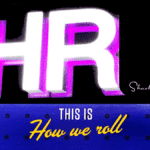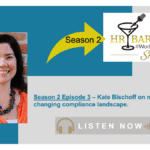I’ve always read that the number one concern of CEOs is recruiting and retaining talent. At this year’s Great Place to Work Conference, I heard from several CEOs that the speed of change was keeping them up at night.
Don’t get me wrong, I don’t believe they were saying that recruiting and retention weren’t important anymore. My take was that recruiting and retention are a given. Like profits. They have been and always will be a priority.
Speed of change, though, is something new. Never before has business moved so rapidly. As a result, I’m hearing about companies that are rethinking the value of long-term vision statements because their organizational vision needs to be more fluid. Companies are redefining what short-term and long-term mean for the purposes of strategic and operational planning.
From a talent perspective, speed of change manifests itself in hiring too quickly. Several CEOs mentioned their concerns about hiring experts who aren’t culture fits because the company needs to fill positions. At one specific session, Arden Hoffman, vice president of people at Dropbox, talked about how her company is keeping their culture intact during this period of rapid growth and change.
How to Maintain Company Culture During Rapid Change
Dropbox is a file hosting service, headquartered in San Francisco, that offers cloud storage, file synchronization, personal cloud, and client software. As of March 2016, they have 500 million users. Hoffman shared that the company has grown seven-fold and this prompted the senior management team to ask, “How do we keep Dropbox ‘Dropbox-y’?” A very fair and essential question.
Hoffman shared that the company realized that the key to keeping up with change was to have a clearly defined culture. Company culture doesn’t just happen. It takes deliberate action to create it and to maintain it.
- It starts here. Employees need to have someone they can trust as well as confide in. Especially during times of great change. Even when managers are giving clear and transparent answers. Change isn’t always easy, even when it’s welcomed.
- Measure what you treasure. At Dropbox, managers are held accountable for attrition, hiring, diversity, engagement, etc. Not only what they do but how they do it. So, results are important, but methods are equally important.
- AIM HIGHER. Dropbox employees succeed by being genuine, humble, passionate, audacious, and thoughtful. During performance reviews, employees get credit for contributing to the company culture. The focus is on “how” things get done versus “what” gets done.
- “WE”. As Dropbox was growing and expanding, they wanted to make sure the company culture wasn’t lost in new locations. So, they relocated a senior level employee to help with the office opening. It allowed them to hire lots of new people with many different values while at the same time preserving the company culture.
- This one is both fun and very hard to describe. Cupcake is defined as innovation and an element of surprise. For example, Dropbox sends a cupcake with every job offer. Employees are then asked during orientation how they can implement cupcake in their jobs.
Focus on Things You Can Maintain Long-term
I saw an article in Talent Economy Magazine that implied organizations are moving away from long-term compensation structures because technology is moving too fast. If that’s true, then the way to manage the speed of change is by focusing on those things that can withstand massive amounts of change. Company culture has to be one of those things.
Image captured by Sharlyn Lauby after speaking at a conference in Chicago, IL
0








Andrea Torti says
A fluider workplace recognizes and embraces people’s (and leaders’) humanness – sometimes they don’t know what to do, sometimes they need help from the rest of the team; and it’s O.K.
Margaret Godwin says
I love that they focus on how things get done. So often we focus on the “results” that we don’t pay any attention to what it cost to get there! How do we know if the cost outweigh the benefits if we don’t measure it or at least try and be aware of it. Also to often, the cost of results is burned out employees and compromised culture. Good on Dropbox for putting priorities in the right place and thank you for writing this blog to spotlight this great example!